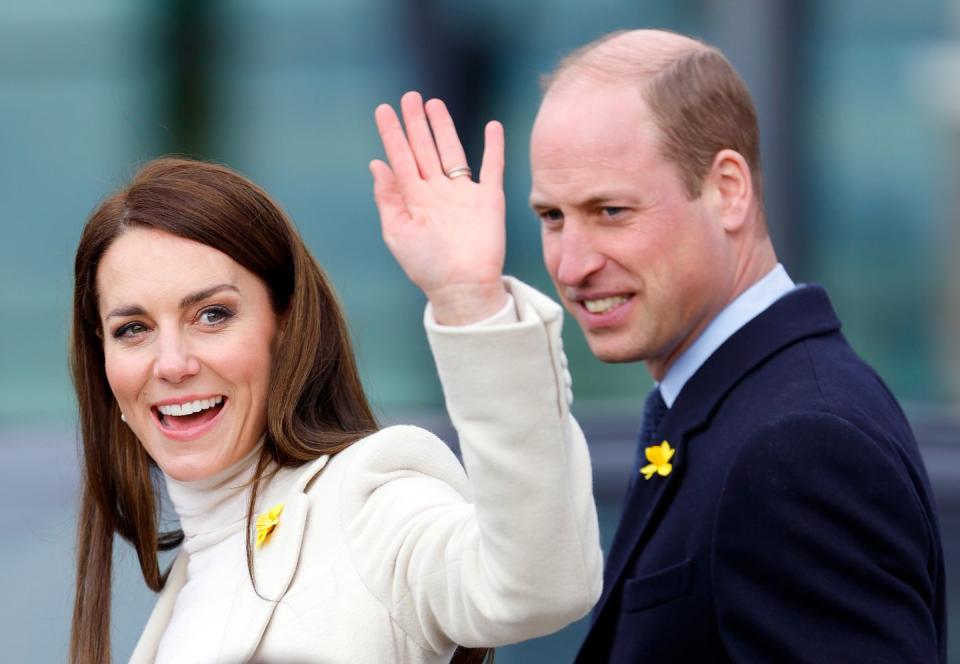The Secret Symbolism Hidden in Kate Middleton's Video Message Announcing Her Cancer Diagnosis

When Kate Middleton announced her cancer diagnosis just one week ago, she did so via a video message recorded at Windsor Castle. Sitting on a bench alone, the Princess of Wales spoke about how it has been an "incredibly tough couple of months."
"It has taken us time to explain everything to George, Charlotte and Louis in a way that is appropriate for them, and to reassure them that I am going to be okay," she said. "As I have said to them; I am well and getting stronger every day by focusing on the things that will help me heal; in my mind, body and spirits."

Behind the Princess of Wales, notably, was a field of daffodils—which carry a deeper meaning. In fact, the flowers have a double significance for Kate: they signify the fight against cancer, and the national flower of Wales.
"In the language of flowers, daffodils represent new beginnings as well as resilience," according to Jill Brooke of Florists' Review. "In fact, there is a Daffodil Day each year. Wearing the flowers is a statement in support of survivors and a call to fight [cancer]. Survivors, patients, friends and family wear a daffodil on their lapels."
Per Cancer Society, cancer organizations around the world use the daffodil as a symbol of hope. They explain, "it was first used in Toronto, Canada in the 1950s during volunteer organised coffee mornings to raise money for cancer awareness and research. Guests were given a daffodil as thanks for their support."

In addition, the daffodil is the national flower of Wales, and is traditionally worn on St. David's Day every year (on March 1). Per Wales.com, "Exactly how the flower wangled its way into Welsh culture (with links between the two only really forming in the 19th century) is something of a mystery, but its rise in status was likely aided by the flower’s Welsh name: cenhinen Bedr, which literally translates as 'Peter's leek' – leeks having been a symbol of Wales since before the 16th century (though, who exactly Peter is, we're not sure) – and the way they tend to come into bloom around St David’s Day (Wales' national day) on 1 March. The fact they're also somewhat prettier than leeks (especially when worn on clothing), likely aided their swift rise to fame as emblems of Wales."
You Might Also Like


